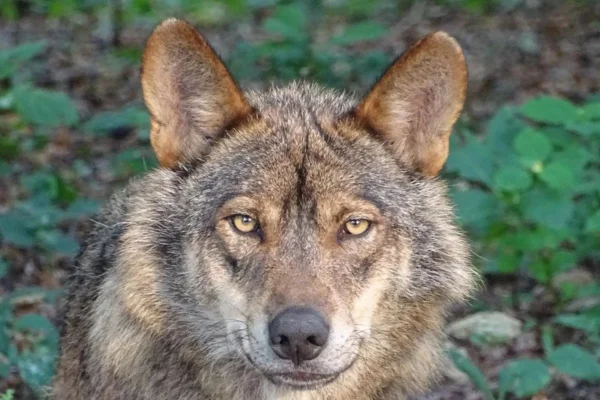The Fascinating World of the Iberian Wolf: History, Biology and Conservation
The Iberian wolf (Canis lupus signatus), a subspecies of the gray wolf, is one of the Iberian Peninsula's most emblematic predators. This majestic animal, which plays a crucial role in local ecosystems, has faced a number of challenges over the centuries. We will explore the biology, behavior, habitat and conservation efforts of the Iberian wolf, as well as its cultural and historical importance in the region.
Physical characteristics and biology
The Iberian wolf is slightly smaller than other subspecies of gray wolves, with a weight of between 20 and 40 kg and a height of around 70 cm at the shoulder. Its coat is dense and predominantly grayish in color, with distinctive spots on its forelegs, which give it a unique appearance. These wolves are adapted to life in a variety of landscapes, from dense forests to mountainous regions and open areas.
They have a highly developed sense of smell, which is essential for hunting and communication. Their howls, which can be heard from great distances, are a vital tool for maintaining contact between group members and marking territory.
Contents
Behavior and Social Structure
Iberian wolves live in family groups known as packs, which usually consist of a breeding pair and their offspring. The social structure is hierarchical, with the alpha wolf leading and making decisions crucial to the group's survival. Packs are highly cooperative, especially during hunting, where coordination and communication are essential for capturing larger prey such as deer, wild boar and stags.
Communication between wolves is complex and includes vocalizations, body language and scent marks. This communication not only helps in hunting, but also in defending the territory against other packs and in raising pups.
Habitat and distribution
Historically, the Iberian wolf was widely distributed throughout the Iberian Peninsula. However, due to intensive hunting and habitat loss, its distribution has been severely reduced. Today, wolf populations are mainly concentrated in the northern and western regions of Spain, as well as in some areas of Portugal.
Wolves prefer habitats that offer an abundance of prey and enough cover to hide in. Mixed forests, mountainous areas and dense scrubland are ideal habitats for these predators. Habitat fragmentation, however, remains a significant challenge, as it prevents dispersal and colonization of new areas.
Conservation and Challenges
The conservation of the Iberian wolf is a complex and multifaceted issue. In recent years, there has been an increase in efforts to protect this subspecies, with various organizations working to raise public awareness and implement protection measures. In Spain, the Iberian wolf is protected by law in some regions, but can still be hunted in others, which creates an uneven conservation landscape.
The main challenges for wolf conservation include illegal hunting, conflicts with farmers due to livestock predation, and habitat fragmentation. Financial compensation programs for farmers whose herds have been attacked by wolves have been implemented, but are not always effective. In addition, education and awareness-raising among local communities are crucial to promoting coexistence between humans and wolves.
Cultural and Historical Importance
Wolves have a special place in the culture and history of the Iberian Peninsula. They appear in many legends and folklores, often symbolizing strength, mystery and the wilderness. For centuries, wolves have been both feared and revered, seen as competitors by hunters and as protectors of the forests by others.
In literature and art, Iberian wolves are often depicted as noble and majestic creatures, often in conflict with man, but also as an integral part of the natural balance. This symbolism is still strong today, influencing the way people perceive and relate to these animals.
Research and Monitoring Efforts
Research into the Iberian wolf is essential for its conservation. Several monitoring projects are underway, using cutting-edge technology such as GPS collars and trail cameras to study the behavior, population dynamics and movement patterns of wolves. This data is crucial for developing effective conservation strategies and adapting protection measures as necessary.
Genetic studies also play an important role in understanding the health and genetic diversity of Iberian wolf populations. Maintaining high genetic diversity is vital for the species' resilience to disease and environmental changes.

Conservation and Education Initiatives
In addition to legal protection measures and research, several conservation initiatives focus on education and public awareness. Educational programs in schools and rural communities aim to teach about the ecological importance of wolves and promote sustainable coexistence practices.
Conservation organizations also work closely with farmers and landowners to develop conflict mitigation methods, such as reinforced fences and the use of guard dogs. These initiatives not only help protect livestock, but also promote a more positive attitude towards wolves.
The Future of the Iberian Wolf
The future of the Iberian wolf depends on a delicate balance between conservation and human development. Although there are positive signs of recovery in some areas, the species still faces many threats. International cooperation, robust conservation policies and the involvement of local communities are key to ensuring the long-term survival of the Iberian wolf.
Preserving this subspecies is not just a matter of saving an iconic predator, but also of maintaining the health and integrity of the Iberian Peninsula's ecosystems. Wolves play a crucial role as top predators, helping to control prey populations and maintaining the natural balance.
Conclusion- Iberian wolf
The Iberian wolf is a vital part of the Iberian Peninsula's natural and cultural heritage. Its survival depends on ongoing conservation efforts and the ability of human communities to coexist with this majestic predator. Through research, education and effective protection policies, we can ensure that future generations will continue to hear the howls of Iberian wolves in the region's mountains and forests, symbolizing the strength and resilience of wild nature.









